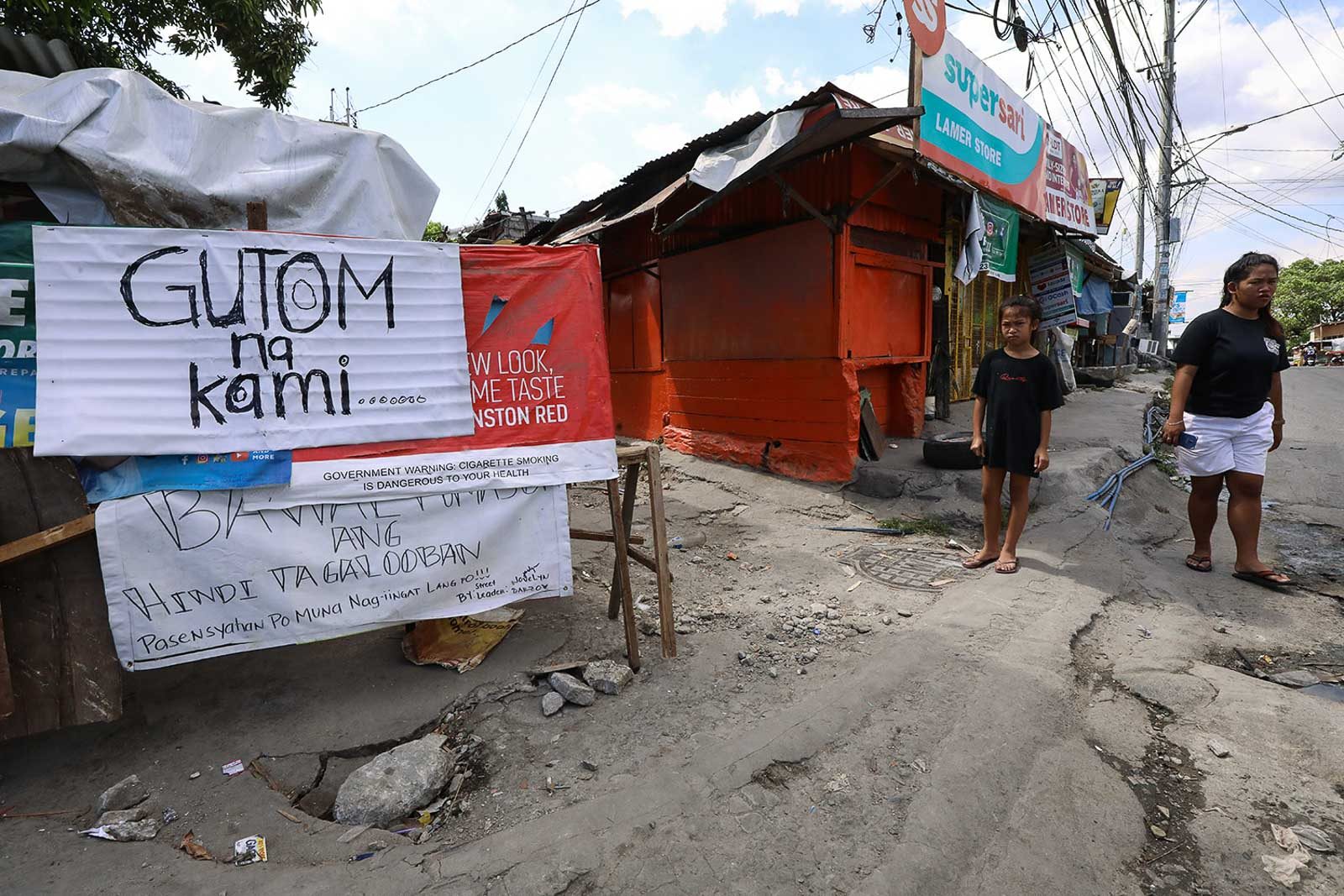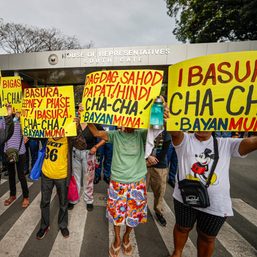SUMMARY
This is AI generated summarization, which may have errors. For context, always refer to the full article.

An estimated 7.6 million Filipino households went hungry due to lack of food at least once during the height of the coronavirus pandemic, a Social Weather Stations (SWS) survey found.
Results released on Sunday, September 27, showed hunger incidence of 30.7% – the highest rate since the previous record of 23.8% in March 2012.
The SWS said this refers to the proportion of families experiencing involuntary hunger, or hunger due to lack of food to eat.
The survey was conducted through mobile phone from September 17 to 20 among 1,249 adult Filipinos aged 18 years old and above.
The latest September figure is 9.8 points higher than July 2020’s 20.9% and almost 22 points higher than December 2019’s 8.8%, or before the health crisis reached the Philippines.
Increases in all areas
According to the SWS, the jump from July to September can be attributed to the recorded increases in all areas, particularly the new record highs in the Visayas, Mindanao, and Metro Manila.
Visayas registered the highest increase – from July’s 27.2% to September’s 40.7% or 1.9 million families. Its previous peak was at 27.9% in December 2009.
The families who experienced involuntary hunger in Mindanao were at 37.5% or 2.1 million families, from 24.2% or 1.4 million families in July. This figure is almost 4 points higher than the previous record of 33.7% in December 2008.
From 16.3% or 546,000 families in July, the involuntary hunger rate in Metro Manila rose to 28.2% or 941,000 families in September, surpassing the record of 27% in December 2009.
Balance Luzon is the only region which did not break its record – 24.3% in September 2014 – but nonetheless registered an increase. From 17.8% or 2 million families in July, the rate of involuntary hunger in September stood at 23.8% or 2.6 million families.
Record-high severe, moderate hunger
Out of the 30.7% hunger rate, 22% or an estimated 5.5 million families reported to have experienced moderate hunger – meaning they felt involuntary hunger once or a few times in the last 3 months.
At least 8.7% or 2.2 million families experienced severe hunger, or went hungry often or always in the last 3 months.
Both figures are record highs, the SWS noted in the survey results.
Families who suffered from moderate hunger surpassed the previous record of 18.9% in December 2009, while the latest figure for severe hunger exceeded March 2001’s 6%.
The survey was conducted as the Philippines is reeling from the effects of the coronavirus pandemic, including massive loss of livelihood and employment.
In June, the SWS also released survey results which showed that 8 out of 10 Filipinos believe their quality of life got worse in the past 12 months, the worst trend in the survey’s nearly 4-decade history.
– Rappler.com
Add a comment
How does this make you feel?
![[EDITORIAL] Kapag bumabagsak ang ratings, balikan ang basics](https://www.rappler.com/tachyon/2024/04/animated-bongbong-marcos-sara-duterte-popularity-numbers-2024-carousel.jpg?resize=257%2C257&crop_strategy=attention)
![[OPINION] Can Marcos survive a voters’ revolt in 2025?](https://www.rappler.com/tachyon/2024/04/tl-voters-revolt-04042024.jpg?resize=257%2C257&crop=251px%2C0px%2C720px%2C720px)



There are no comments yet. Add your comment to start the conversation.